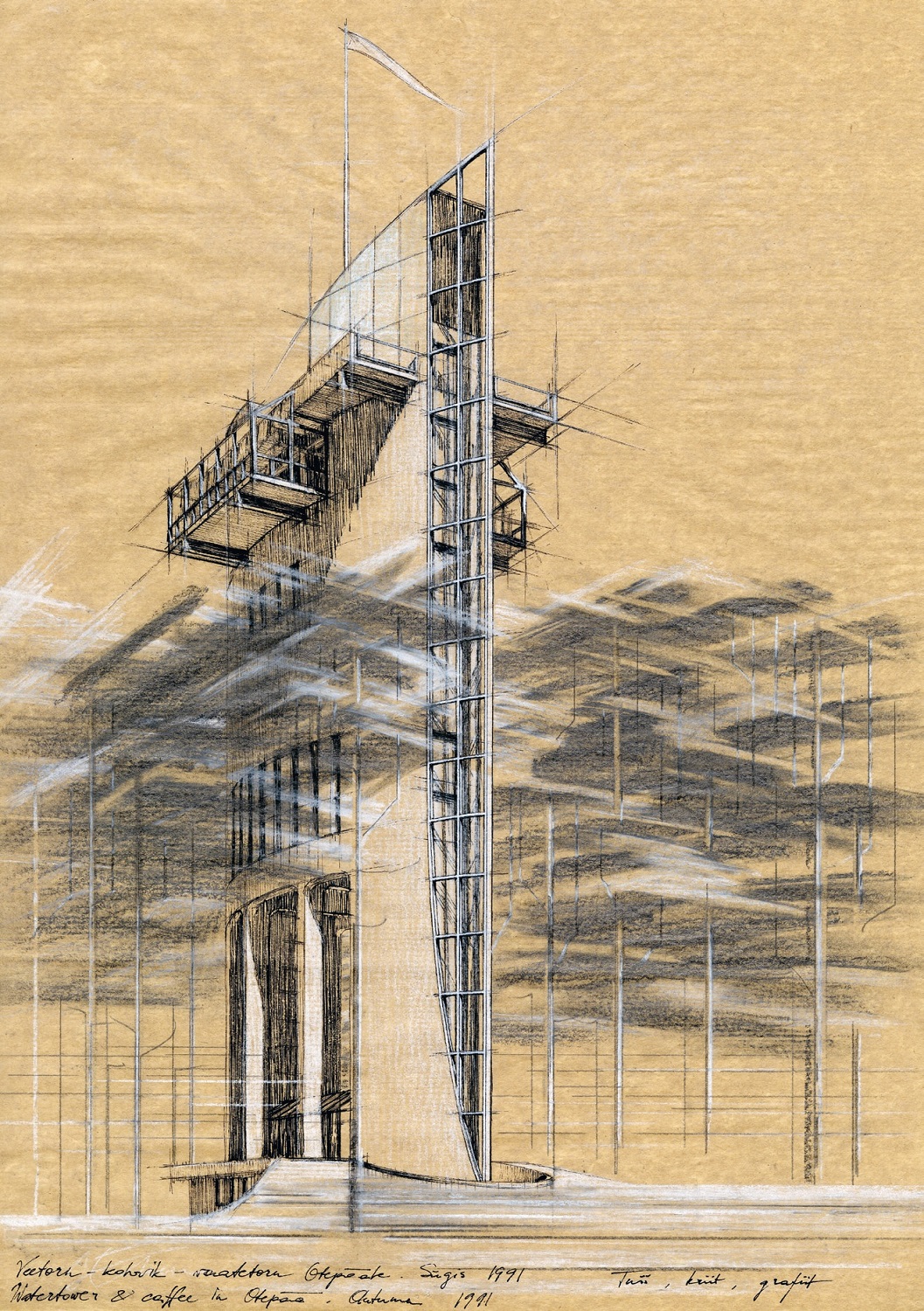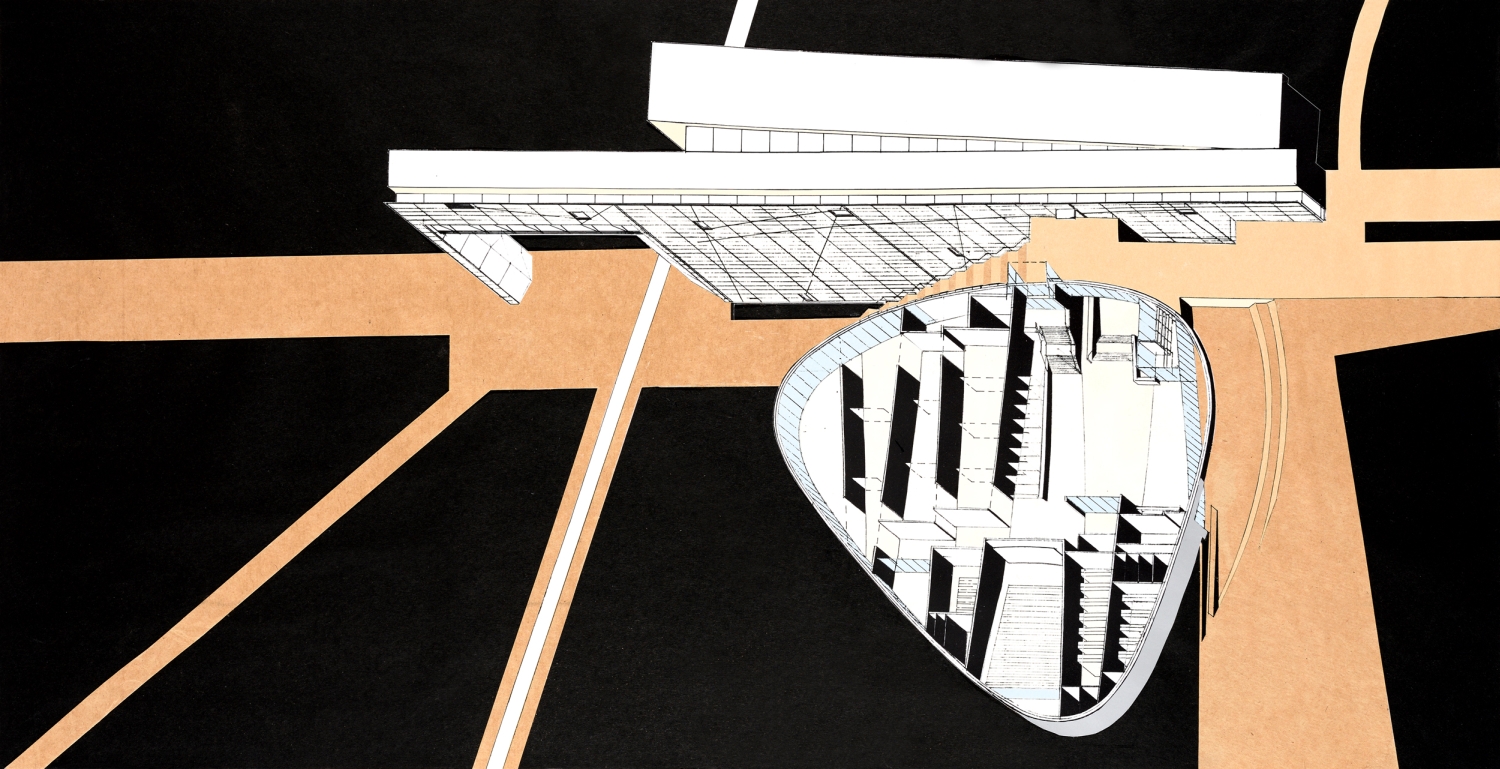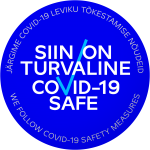Tag Archives: 1990s
Leverex business centre

Andres Alver, Tiit Trummal, 1991. MK 223
In 1991, architects Andres Alver and Tiit Trummal designed a business centre on the territory of the former Kalev company on Pärnu road. The office building project, designed for Leverex, is characterised by a clear geometry of form, an articulated facade and a large glass wall surface on one side of the building. The 12-storey building was to include office space, a conference centre, restaurants, cafes, bars and saunas. A helipad was designed on the roof. A shopping centre with a showroom was planned next to the main building. The Leverex business centre is a timeless example of a project designed in the first half of the 1990s but never built. Architect Andres Alver donated the model to the museum in 2016. Text: Anna-Liiza Izbaš
(klick on the picture to see more)
Veel: 1990s, architect: Andres Alver, architect: Tiit Trummal
Watertower-restaurant in Otepää

Indrek Erm, 1991. EAM 5.8.2
Utilitarian buildings were often complemented with a commercial layer in the transitional society of the 1990s when shifting towards a capitalist economy based on the free market. Technically, the arrival of hydrophore tanks meant that water towers were already outdated and economically unpractical on their own. But a café located at the highest place in town with a glass lift taking visitors up would have had an invigorating city-like effect in a small town. The high-tech perspective view drawn by the young architect Erm was part of a preliminary design that was never implemented because the city government changed. The drawing made in ink, chalk and pencil was given to the museum by Indrek Erm along with the project and technical drawings in 2015. Text: Sandra Mälk
Veel: 1990s, architect: Indrek Erm, Otepää
Competition entry for the Art Museum of Estonia

Kalle Vellevoog, 1994. MEA 5.4.76
Based on the location of the project, the authors of the entry “Pont du Parc” saw an opportunity to bring the two districts – Kadriorg and its Baroque park and Lasnamäe with its Soviet-era panel apartment blocks – closer together. The main volume of the Art Museum stretches across the limestone clint in Lasnamäe, thus bridging the two districts with different historical narratives. The elongated main building houses the majority of the exhibition spaces, whereas the round part was designed for storage and service rooms. An axonometric bird’s-eye view of the building in its topographically unique location highlights the “bridge” message between the two areas. The museum was built according to the winning entry by Pekka Vapaavouri, nevertheless the idea of carving through the limestone has leaked to the design of the memorial to victims of communism in Maarjamäe (Kalle Vellevoog, Jaan Tiidemann, Tiiu Truus). The collage was donated to the museum in 2015 by architect Kalle Vellevoog. Text: Sandra Mälk
Veel: 1990s, architect: Kalle Vellevoog, Tallinn





